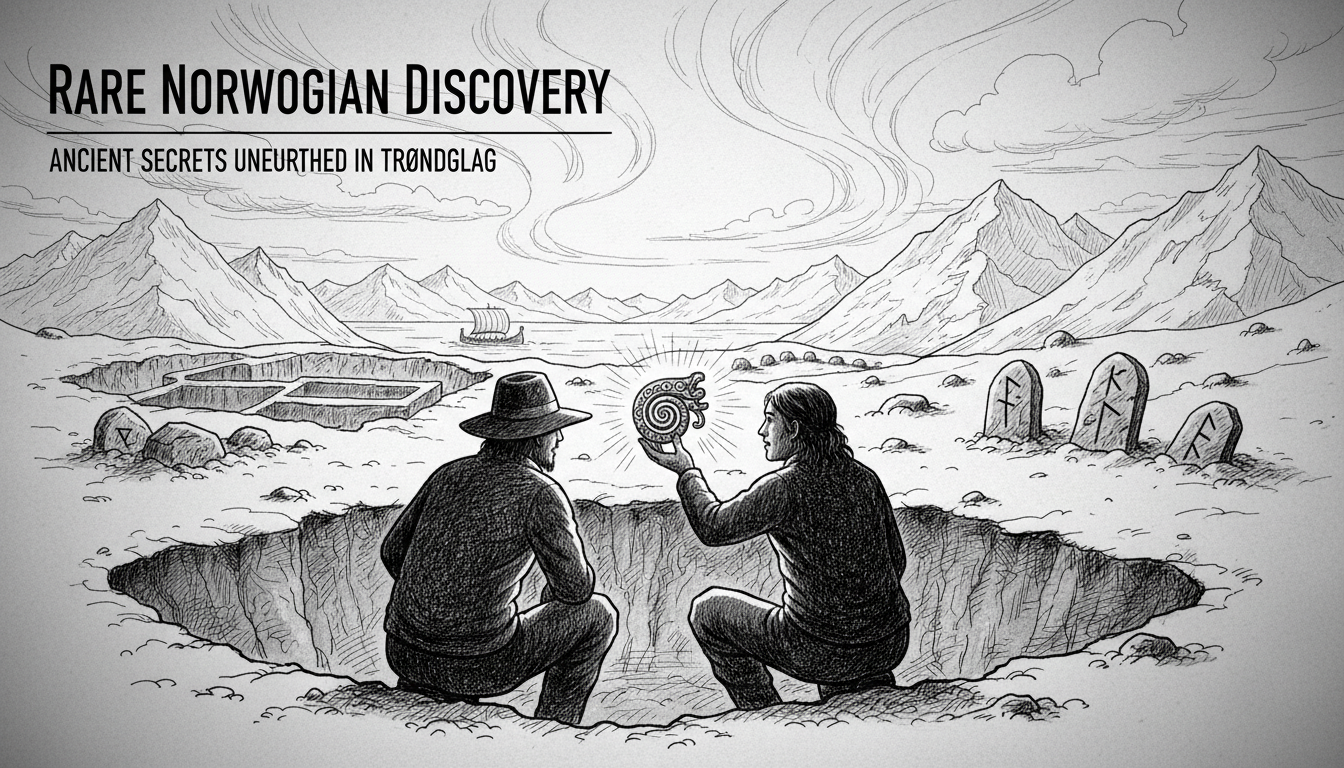Roy Søreng planned to finish work for the day when something extraordinary emerged from the ground. The Norwegian field researcher made a discovery that could rewrite what we know about ancient inhabitants of the Trøndelag region.
Archaeologists describe the find as exceptionally rare and unusual. Raymond Sauvage, an archaeologist with the University Museum in Trondheim, confirmed the importance of the discovery in a statement. He said such finds occur very infrequently and can provide completely new information about past civilizations.
The discovery in central Norway offers fresh insights into early Scandinavian settlements. Archaeological finds in this region often reveal details about Viking Age communities and earlier Iron Age societies. This particular discovery appears to challenge existing understanding of how ancient Trønders lived and organized their communities.
Norwegian soil continues to yield important historical artifacts despite extensive previous research. The country's unique preservation conditions, particularly in certain soil types, help protect organic materials that would decay elsewhere. This environmental factor makes Norway particularly valuable for archaeological research.
International readers might compare this to similar discoveries in Denmark's bog finds or Sweden's Viking Age settlements. The Nordic region consistently produces archaeological breakthroughs that reshape European history. Each discovery adds another piece to the puzzle of how Scandinavian societies developed over centuries.
Local authorities typically secure such sites for proper excavation and documentation. The discovery process involves careful recording of the artifact's position and surrounding soil conditions. Researchers then analyze findings using modern dating techniques and comparative studies with other known sites.
This discovery matters because it fills gaps in our knowledge of pre-Viking era Norway. Understanding how early communities functioned helps explain later historical developments. The find could influence how museums present Norwegian history and might lead to revised historical narratives.
What happens next involves detailed laboratory analysis and academic publication. The research team will work to determine the artifact's exact age and cultural significance. Their findings could take months or even years to fully process and verify through peer review.
Norwegian archaeology frequently produces such surprises despite the country's extensive documented history. This demonstrates how much remains unknown about Scandinavia's past and why continued research remains essential.

